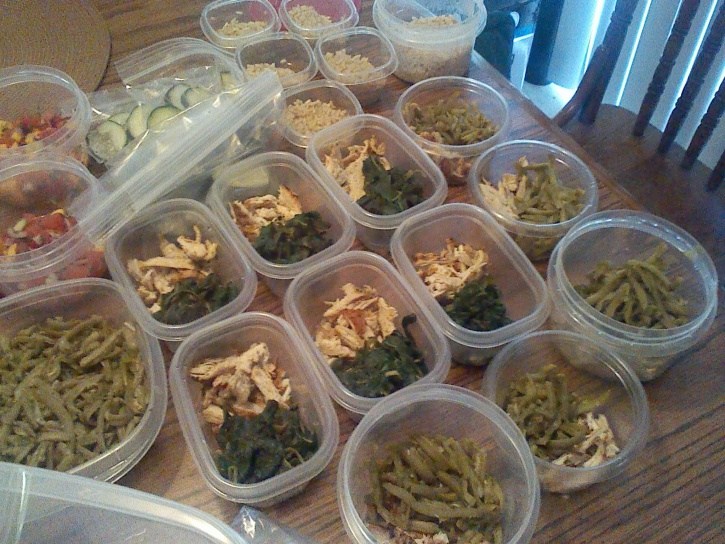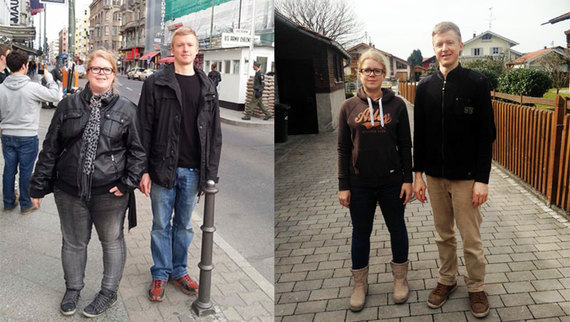Burn Fat 24 Hours A Day Increase Your Metabolic Rate
?Fast or Slow?
Metabolism is a word that most dieters are well familiar with. People who battle with their weight are often thought of as having a 'slow metabolism?, where those fortunate individuals who seemingly can eat anything they wish and not gain weight are believed to have a ?fast metabolism?.
The goal then for most dieters is the pursuit of any strategy that will increase the metabolic rate (MR) and thereby greatly assist with the losing and maintaining of weight.
Before examining ways of adjusting the MR, let's first define 'metabolism?
Metabolism - Defined
Metabolism is defined in the Shorter Oxford English Dictionary as ?The sum of the chemical processes in a cell or organism, by which complex substances are synthesised and broken down, and growth and energy production sustained?.
A commonly referred to term is BMR ? the Basal Metabolic Rate ? i.e. the minimum number of calories required to keep us alive. There are also other terms, such as RMR ? Resting Metabolic Rate ? which is basically the rate of our metabolism during the day whilst performing standard daily tasks (i.e. standard daily activity); SMR ? Sleeping Metabolic Rate ? the rate of our metabolism whilst we are at sleep.
Several factors can affect our MR, but one important aspect that can have significant bearing is the amount of active lean muscle tissue we have on our bodies. When compared to fat, active lean tissue (muscle) requires more calories to sustain itself at rest, and therefore, our musculature or percentage of muscle tissue ? and how it is exercised - can be seen as an effective pathway to adjusting the MR.
As we age, we usually tend to lose muscle mass, and similarly, our metabolism gets slower. As a example comparison, a 70 year-old man would need to do a significant amount of daily activity to ?burn off? the same amount calories that a 26 year old man would ?burn? at rest. Hence, to prevent gaining fat weight as we age, we need to either 1) Decrease our daily caloric intake, or 2) Increase our daily physical activity - i.e.exercise 3) Maintain or even increase our muscle mass (i.e. through resistance training exercise such as weight training).
?How we eat?what we do?
The MR plays a major role in the maintaining and losing of weight (bodyfat) with the objective being to adopt strategies that elevate the MR ? and more importantly ? keep the MR elevated.
There are 2 main options to adjusting the MR
1) Through adjusting of eating patterns
2) Through adjusting of activity levels
Let's review both:
Adjusting of eating patterns
There are many classic analogies that are used to explain how eating affects one's metabolism. One analogy uses a motorcar's engine and fuel consumption:
Motorcar Analogy:
A motorcar uses 3 litres of petrol to travel a distance of 25 KM. If the motorcar was allowed 1.5 Litres of petrol and still needed to travel 25 KM, the engine of the vehicle would need to be tuned in such a way so as to deliver the same driving performance on half the fuel.
Our metabolisms are thought to work in the same way.
When we suddenly reduce our daily caloric intake in an attempt to lose weight, our bodies react by slowing down its MR so that the caloric ?fuel? required to perform the same daily tasks is utilized or ?burned? at a slower rate. Referring to our motorcar analogy again, if the same motorcar was given 3 litres of fuel after being retuned, the car would travel 25KM and still have 1.5 litres remaining.
Similarly, if someone who had been on a reduced calorie diet resumed their previous high-calorie eating pattern, their bodies would store the extra calories as fat, as their now slower metabolisms would not be accustomed to the additional calories.
The eating and digesting of food actually requires the body to utilize caloric energy. To increase ones metabolism, it is recommended that we eat small meals every 3 hrs to keep the metabolism elevated. Where this may help elevate metabolic levels, it is a somewhat limited approach and is best used in conjunction with other strategies. Also, one needs to differentiate between 'total calories? and ?amount of food? consumed. At each time of eating, we are also consuming calories, so we need to ensure that each meal is relatively lower in calories. It would not be wise to eat frequent high-calorie meals and hope that the incremental increase in metabolism would be sufficient to ?burn? the relatively higher number of calories that would be consumed over the day.
Observing the total calories consumed in a day, is then still a critical factor in managing one's weight, and although dividing our individual daily caloric allowance into regular small meals may perhaps be better to ensuring a higher metabolic rate, by itself, this approach is limited in ensuring an optimum level of sustained, elevated MR.
In addition to the frequency of our eating, there are also other eating strategies thought to assist in increasing one's metabolism, such as the including of certain foods believed to have a positive effect on the metabolic rate. Green Tea; Chilli (and other ?hot? foods) are 2 examples of foods that are believed to 'stoke the furnace? so to speak and assist in enhancing our metabolic rates.
However, although the structuring of our eating patterns can have a positive effect on the MR, as mentioned, this approach in itself can be limited and needs to be done in conjunction with other strategies ? such as adjusting of activity levels.
Adjusting Activity Levels
Most people believe that taking up some form of exercise is all that is required to adjust their metabolisms and manage their weight.
Endurance activities such as running or jogging, walking or cycling being the generally preferred options. However, these activities, performed in a steady-state, endurance-style fashion do little to elevate the metabolic rate for an extended period. Although these activities may be healthful and enjoyable, improve circulation and burn calories, they do little to sustain an elevated metabolic rate. In fact, it is now believed that endurance style exercise activities may actually lead to a drop in elevated metabolic rates!
This is a most crucial and controversial point that needs to be clarified in more detail.
Although our MR is mostly genetically pre-determined, when we look at increasing the MR, we should be looking to do so for extended periods. A sustained MR will then assist in ?burning? more calories at rest for longer periods of time. This is effectively achievable though a combination of 2 key factors ? 1) increasing our functional muscle mass 2) utilizing of muscle mass in higher-intensity forms of exercise. If we have higher levels of muscle on our bodies, our MR will increase. We will in effect be ?burning? more calories whilst at rest. Also, when engaging in exercise, the contracting of additional muscle mass will ?burn? relatively more calories during that activity.
Example:
Someone performs an exercise activity for 15 minutes and burns 150 calories. If that person adds 3 Kg of muscle to their frame and performs the same activity for the same period of time, they will burn more calories doing so.
?Doing less?burning more?
Higher-intensity forms of exercise places higher demands on our metabolic systems, and keep our metabolisms elevated for far longer periods.
When people talk about effective forms of calorie-burning exercise, they usually only think of how many calories are utilized whilst actually performing the activity.
Typically, running is seen as an ideal calorie burning activity because running is seen to burn a relatively high number of calories.
But where endurance running may burn significant calories during the activity, it has 2 negatives:
1) Your metabolic rate drops relatively quickly once you stop an endurance activity, with your metabolism returning to normal almost an hour after stopping.
2) Endurance activities are generally ?catabolic? ? i.e. it creates a reduction in lean muscle mass. As we have discussed, RMR is affected by the amount of muscle mass ? hence a drop in muscle mass, will lead to a corresponding drop in MR.
Hence, if you examine most marathon runners, although they usually have lower levels of bodyfat, they are also usually relatively thin, with relatively low levels of lean muscle mass.
?Muscle?and intensity?
However, this does not mean that the objective is to suddenly aspire to becoming a bodybuilder ? although, bodybuilding or specifically, musclebuiliding - certainly does increase the MR and RMR. However, if we are looking to elevate and sustain our MR, then wherever possible we should look to intensity when exercising:
Intensity Vs Endurance
Intensity is a key factor to increasing our MR through exercise. To exercise with intensity, usually means working ?harder? ? to constantly ?push? or overload one's muscular and cardiovascular system.
Now naturally this approach needs to be done VERY CAREFULLY, with intensity levels being increased GRADUALLY - especially if one is not used to harder forms of exercise. Also, if you are presently significantly overweight, it may be easier on your body to first lose some of the weight through corrective eating before attempting to overload your body with a higher-intensity exercise program (It is therefore perhaps a better route to use a corrective eating to lose gained weight and higher intensity exercise to assist in preventing gaining weight).
Training with higher levels of intensity usually requires a higher level of muscular recruitment (i.e. the muscles working at a higher capacity as well as more muscles working together) and energy, and similarly requires the cardio system (heart & lungs) to work harder. Not only does higher intensity training burn relatively more calories than endurance or lower-intensity exercise, but of greater importance, it causes the MR to remain elevated for relatively longer periods after exercising.
An effective form of intensity training is ?Interval Training? ? alternating brief periods of intensity, with periods of recuperation.
Example: Running Intervals (Beginner)
Walk for 2 minutes
Jog for 10-20 secs
Walk for 2 minutes
Jog for 10-20 secs
Repeat until 15 minutes is reached
Example: Running Intervals (Advanced)
Walk for approx 30 Secs
Jog for approx 45 secs - 1 minute
Sprint or run fast for 30-45 secs
Repeat 10-12 times (or until 20 minutes is reached)
This approach can naturally be applied to any form of endurance activity, and can be varied based on current level of fitness.
The key aspect is to gradually increase the intensity, by shortening the rest periods &/increasing the periods of intensity. One can also increase intensity through increasing the load placed on the muscles ? i.e. Hills; Weighted belts.
For very advanced training, one can combine the 2 ? i.e. interval training with added resistance - however, this places significant demands on the body and should only be considered once a high level of fitness has been attained.
Now naturally, higher intensity training needs to be briefer in duration, and, due to the fact that it places a higher demand on the body, also requires relatively longer rest periods between sessions. This not only allows for a sufficient recovery period, but also allows the muscles involved to repair and grow stronger so as to be able to handle the higher intensity loads.
Resistance or weight training should also form a part of ones exercise program ?although, again, this need not necessarily mean heavy weight training and can include a wide range of activities. Bodyweight exercises, as well as a variety of different resistance exercises can be done with higher levels of intensity so as to place higher demands on the body that will result in a sustained elevated MR. Higher intensity strategies such as ?Supersetting? (doing 2 exercises in succession with minimal rest in between); ?Giant setting? (doing more than 2 exercises in succession with minimal rest in between) and ?Progressive resistance loads? (adding more resistance) are 3 approaches that can be used to increase intensity.
The key to remember is more intense levels of activity done for briefer periods is a far better approach to increasing and sustaining one's metabolic rate, than easier exercise done for extended periods.
?Injuries?Overuse?.Enjoyment?
Just because higher intensity exercise is believed to increase MR more efficiently, it does not necessarily mean that we should abandon all other forms of exercise activity.
Many people engage in activities such as cycling, walking, sports, yoga, pilates etc for recreational reasons; for enjoyment, not just to lose weight, and this should always be an important consideration. However, many people unfortunately pursue endurance-type exercises with the sole objective of losing or managing their weight. As mentioned earlier, endurance-type exercise is perhaps not the ideal exercise strategy to managing weight. Also, many endurance exercisers fall into the trap of increasing their exercise durations/distances as a means to compensating for increased eating ? e.g. ?I'll run an extra 5 Km's tomorrow to ?burn? off that extra piece of cake?. This sometimes becomes a habit, and, in addition to the negative psychological aspects of such an approach, it can also lead to various forms of overuse injuries as well as related postural weaknesses.
So, if exercise is to be used effectively as a means to sustaining an elevated MR, a preferred route would be to use higher-intensity exercise strategies, and to also ensure that adequate (ideally optimum) levels of lean muscle mass is maintained.
-
Cost of Weight Watchers
Disclaimer: The team of Weight Watchers keeps updating the program, ac
-
Weight-loss Drug Raises Blood Pressure
A new review of existing research confirms that a weight-loss drug rai
-
Find Your Ideal Weight
Many of us are interested to know and find ideal weight. This is not s
-
Weight Loss Diet Plan
Why is losing weight so difficult? In spite of a simple logical equa
-
Lose Abdominal Fat For Good - The Only True lasting Weight Loss
There are various outlandish dieting and
-
Hypnotism For Weight Loss: Look Better & Ensure You Lose The Weight That Keeps Holding You Back
Hypnotism for weight loss is proving to be a strong tool that many ov
- DON'T MISS
- Effective Weight Loss Plan For Men
- The Essential Ingredient For Weight Loss
- Drinking Liquids for Weight Loss
- Laxatives For Weight Loss
- 11 Ways to Lose Weight
- 3 Tips to Lose Fifteen Lbs Rapidly
- Lifestyle Vs GymWhich Is Best To Lose Weight
- Importance Of Body Image And Self Esteem
- Weight loss and amino acids
- A Diet That Works Isnt That What We Are All Looking For Hurry Up




